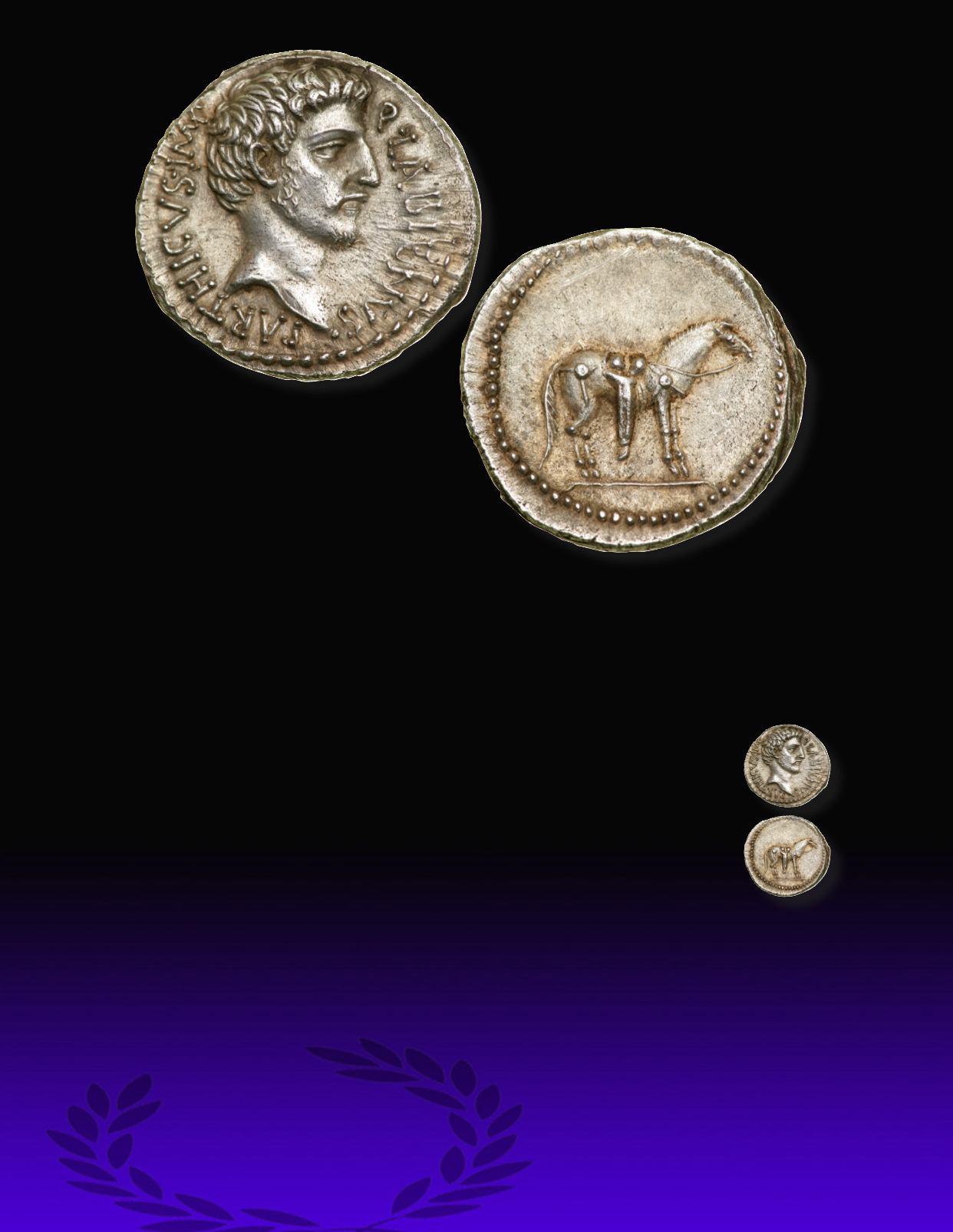
77
3092
Q. Labienus. Silver Denarius (3.74 g), 40 BC.
Uncertain mint in Syria or southeastern Asia Minor.
Imperator, executed in 39 BC.
Q LABIENVS PARTHICVS IMP, bare head of Labienus right.
Re-
verse:
Horse standing right on ground line, wearing saddle with quiver attached and bridle. Craw-
ford 524/2; Hersh 23; HCRI 341; Sydenham 1357; RSC 2.
Extremely Rare.
Boldly struck with a
magnificent portrait of superb style in high relief, struck on a full flan, unusually fine metal and
delicately toned.
Among the finest specimens known
.
Superb Extremely Fine.
Quintus Labienus was the son of the Pompeian cavalry commander Titus Labienus. He sided with
Brutus and Cassius in the war between the Republicans and the Triumvirs, and during the winter of
43/2 BC was sent by Cassius on an embassy to seek Parthian assistance in the Republican cause.
Before he was able to do accomplish this task, however, he received the devastating news that
Brutus and Cassius had been defeated at Philippi. Thus he found himself in the unpleasant situation
of being stranded in Parthia and unable to return to Rome, where his former enemies were now
unquestionably in control and would certainly execute him for being a traitor if he were to return.
With nothing to lose, Labienus convinced King Orodes II to allow him a force of 20,000 cavalry, and
with the king’s son, Pacorus, he marched into Syria. Labienus and Pacorus, splitting the command
between them, quickly overcame Roman resistance, defeating the local governor, Decidius Saxa.
While Labienus continued into southern Asia Minor, Pacorus headed west and south into Phoenicia
and Palestine. Although Antony realized the seriousness of the situation, his attention was called
for in the West. He therefore sent his legate Ventidius Bassus with eleven legions to oppose the
Parthian invasion, and Bassus routed the Parthian cavalry at Mt. Taurus where Labienus was killed.
The obverse of this extremely rare issue shows the handsome portrait of Labienus along with
his name and titles, while the reverse depicts a saddled horse complete with archer’s bow-
case, a feature used by the Parthians who were most renowned for their mounted archers.
Thus, the coin seems to have been designed to appeal to both a Roman and a Parthian
audience, although perhaps shortsighted, as certainly no Roman would have considered
the design as anything less than unconscionable. In any case, the extreme rarity of the
coins today suggests the majority of them were melted down shortly after Labienus’ defeat.
Estimated Value......................................................................................................... $150,000 - 200,000
Ex S. C. Markoff Collection (NAC 62, 6 October 2011), 2009.


